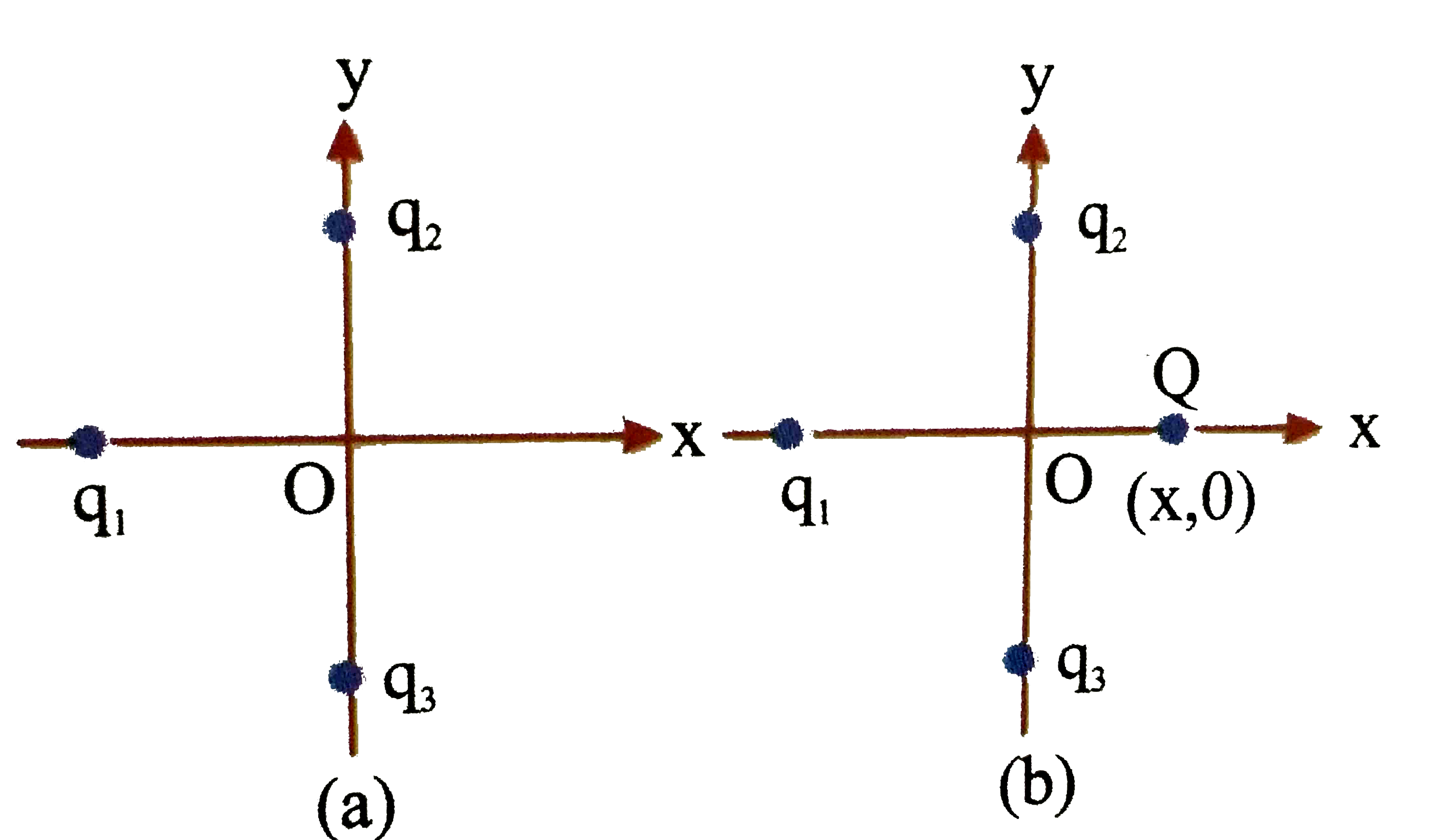In the figure two positive chargesq2 and q3 fixed along the Y-axis, exert a net electric force in the + x direction on a charge q1 fixed along the X-axis. If a positive charge Q is added, at {x, 0), the force on q1

shall increase along the positive X-axis
shall decrease along the positive X-axis
shall point along the negative X-axis
shall increase but the direction changes because of the intersection of Q with q2and q3
The correct Answer is:A
Similar Questions
In figure two positive charges q2 and q3 fixed along the y-axis, exert a net electric force in the +x direction on a charge q1 fixed along the x-axis if a positive charge Q is added at (x,0) the force on q1

View SolutionIn figure two positive charges q2 and q3 fixed along the y-axis ,exert a net electric force in the +x direction on a charge q1 fixed along the x-axis if a positive charge Q is added at (x,0) the force on q1

View Solution
Knowledge Check
In figure two positive charges q2 and q3 fixed along the y-axis, exert a net electric force in the +x-direction on a charge q1 fixed along the x-axis. If a positive charge Q is added at (x,0), the force on q1.
 Ashall increase along the positive x-axisBshall decrease along the positive x-axis.Cshall point along the negative x-axisDshall increase but the direction changes because of the intersection of Q with q2 and q3.
Ashall increase along the positive x-axisBshall decrease along the positive x-axis.Cshall point along the negative x-axisDshall increase but the direction changes because of the intersection of Q with q2 and q3.In figure two positive charges q2 and q1 fixed along the y-axis ,exert a net electric force in the +x direction on a charge q1 fixed along the x−aξs if a positive charge Q is added at (x,0) the force on q1
 Ashall increase along the positive x-axisBshall decrease along the positive x-axisCshall point along the negative x-axisDshall increase but the direction changes because of the intersection of Q and q2 and q3
Ashall increase along the positive x-axisBshall decrease along the positive x-axisCshall point along the negative x-axisDshall increase but the direction changes because of the intersection of Q and q2 and q3Two equal positive charges Q are fixed at points (a, 0) and (−a,0) on the x-axis. An opposite charge -q at rest is relased from point (0, a) on the y-axis. The charge -q will
AMove to infinityBMove to origin and rest thereCUndergo SHM about the originDExecute oscillatory motion but not SHM
In figure two positive charges q2 and q3 fixed along the y-axis ,exert a net electric force in the +x direction on a charge q1 fixed along the x-axis if a positive charge Q is added at (x,0) the force on q1

View SolutionA positive point charge q1 is placed at (a,0) and another positive point charge q2 is placed at (0,a) . Find the force acting on q1.
View SolutionA positive point charge q1 is placed at (a,0) and another positive point charge q2 is placed at (0,a) . Find the force acting on q1.
View SolutionTwo equal positive charges Q are fixed at points (a, 0) and (−a,0) on the x-axis. An opposite charge -q at rest is relased from point (0, a) on the y-axis. The charge -q will
View SolutionA two point charges 4q and -q are fixed on the x - axis x=−d2andx=d2 , respectively. If a third point charge 'q' is taken from the origin to x = d along the semicircle as shown in the figure, the energy of the charge will

View Solution
